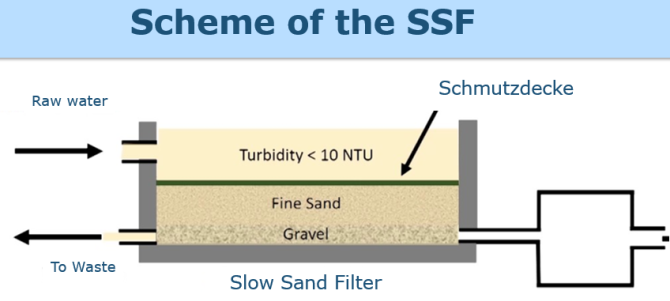
Project
Slow sand filtration of the next century
This project aims to unravel the interplay between microbial and physical-chemical processes in existing and next generation slow sand filters that relate to biodegradable-dissolved organic carbon removal. Results will be used to introduce innovative strategies and improve the design and efficiency, make slow sand filters ready for the next century.
Background
Slow sand filtration (SSF) is a reliable technology for the production of drinking water. However, its design needs to be optimized by addressing two main knowledge gaps: 1) how to fasten the formation of the biologically active layer (schmutzdecke) and to avoid its rapid clogging, and 2) which process conditions/microbial processes can be optimized to reduce surface area and bed height of SSFs to make them more sustainable.

Aim
This project will focus on unravelling the microbiological processes occurring in SSFs and their interaction with physio-chemical processes in order to optimize filters performance. The first step is to investigate the influence of filter age, depth and bed height, temperature and treatment processes on the microbial communities and biological processes in SSFs. This will be followed by the identification of the key microbial players and metabolic microbiological processes in SSFs in relation to removal of biodegradable-dissolved organic carbon (BDOC). The next step is to enrich, isolate and characterize microorganisms and microbial consortia that can be used as inocula to fasten the ripening of the schmutzdecke layer. The last step is to investigate the influence of new engineering solutions for new SSFs, proposed by the PhD from TUD, on microbial community dynamics with respect to structure and functioning.
Expected results
- Evidence of the key microbial players and biological processes in BDOC removal in SSF
- Influence of filter age, depth, bed height and temperature and treatment process on the biological processes in SSF
- Microbial isolates and consortia that can be used to fasten the development of SSFs; Integrated results with a PhD student from TUD to design rules for new SSFs ready for the next century.